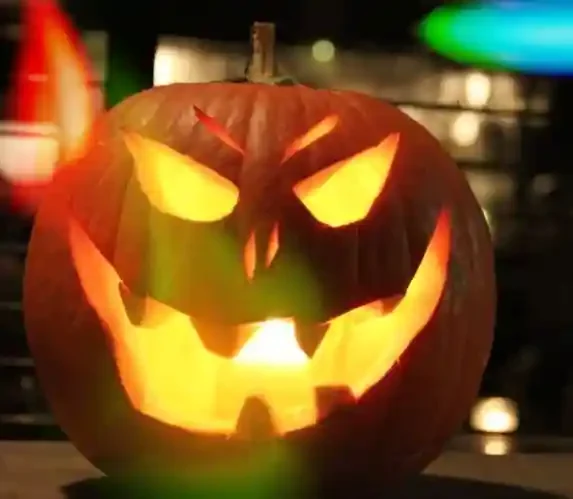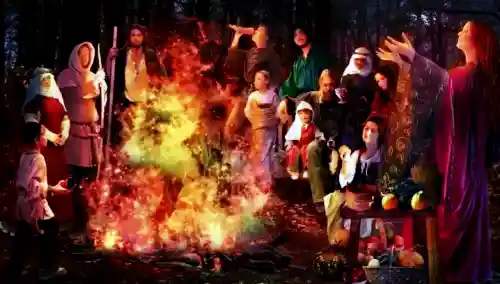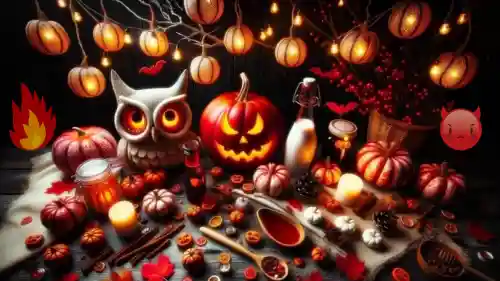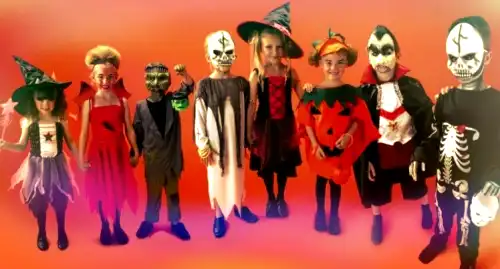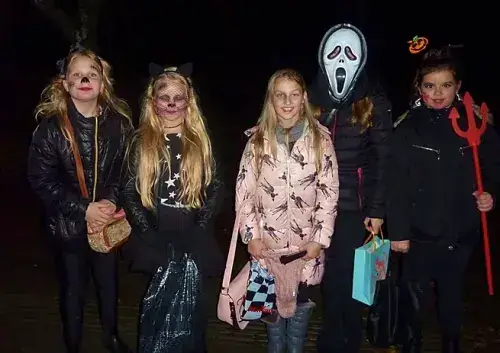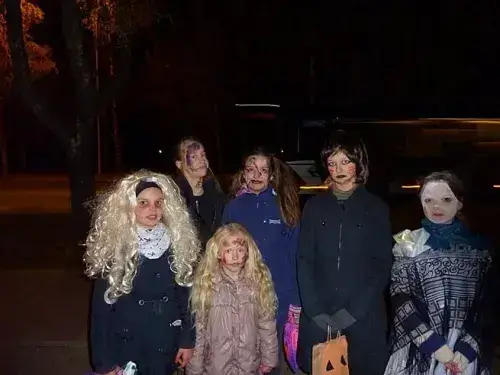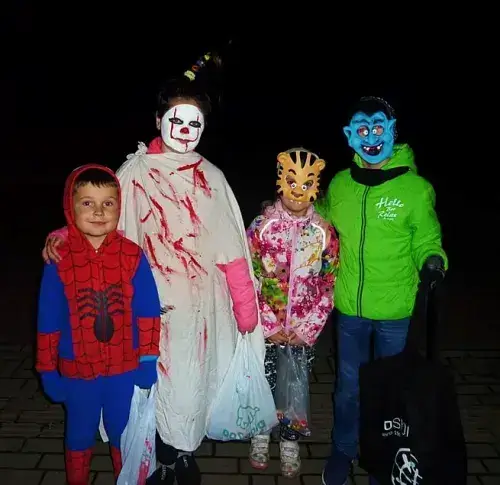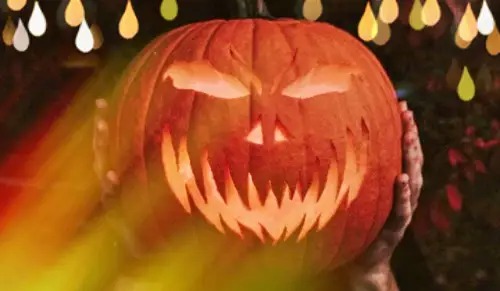Halloween. Every autumn, as the days grow shorter and the air takes on a crisp, chilling bite, a unique transformation occurs across the globe. Thousands of children, and indeed many adults, don fantastical costumes.
From the terrifying visages of vampires, zombies, and ghostly apparitions to the elaborate getups of superheroes and beloved fictional characters. They parade through neighbourhoods, their voices ringing out with the playful, yet slightly demanding, chant of “Trick or Treat!”
Meanwhile, grown-ups host elaborate costume parties, their celebrations a blend of spooky merriment and nostalgic fun. This peculiar holiday, known as Halloween, is far more than just a night for candy and dress-up.
It is a global phenomenon with roots stretching back over two millennia, intertwining ancient pagan rites with later Christian observances.
Halloween and Spiritual.
Held unfailingly on the night of October 31st, Halloween has evolved from a solemn spiritual occasion marking the transition between seasons into one of the world’s most widely celebrated, secular holidays.
Its unusual traditions and widespread appeal make it a fascinating subject, a cultural melting pot where the ancient and the modern meet under the watchful glow of a carved pumpkin.
To truly understand Halloween, one must delve into its murky and mystical origins, tracing its path from the misty isles of the ancient Celts to the brightly lit streets of the 21st century.
The Genesis of Ghosts.
The Ancient Festival of Samhain.
The story of Halloween begins not with carved pumpkins, but with a colossal communal bonfire and the deeply rooted spirituality of the ancient Celts, who inhabited the lands now known as Ireland, Scotland, and Great Britain.
For these people, life was inextricably linked to the cycles of nature, and the year was distinctly divided into a light half (summer) and a dark half (winter).
The pivotal turning point between these two halves was marked by the festival of Samhain (pronounced Sow-in or Sah-win), a name derived from Old Irish, believed to mean “summer’s end.”
Samhain was the most significant of the four major Celtic fire festivals, effectively marking the Celtic New Year. It was celebrated over several days, culminating in the night of October 31st to November 1st.
For the Celts, this transition was a time of both profound significance and considerable peril. It heralded the end of the harvest season a time of abundance and life and the beginning of the long, dark, and often perilous winter a season historically associated with scarcity, hardship, and death.
Crucially, the Celts believed that the boundary between the world of the living and the Otherworld (the realm of the dead and supernatural entities) became exceptionally thin, or liminal, during Samhain.
It was a brief, powerful moment when the normal order of the universe was suspended, allowing spirits, both benevolent ancestors and malevolent ghosts, fairies, and demons, to cross over and mingle with humanity. This belief system shaped the core practices of the festival.
Samhain Rituals.
Warding Off the Darkness.
The primary objective during Samhain was to appease the spirits and ward off any harmful supernatural entities that might be lurking. Several key rituals were observed:
Bonfires.
Massive communal bonfires were lit on hilltops. These fires served multiple purposes: they provided light against the encroaching darkness, acted as a protective barrier against evil spirits, and were a means of ritual cleansing and regeneration.
All household fires would be extinguished and then ceremonially relit from the central Samhain bonfire, symbolizing the renewal of the community for the new year. It was also customary for the bones of slaughtered livestock (a practical necessity before winter) to be cast into the flames.
Costumes and Disguises.
To move about safely among the roaming spirits, the Celts would disguise themselves. By wearing rudimentary costumes, often made of animal skins and heads, and painting or masking their faces, they hoped to confuse any passing spirits into believing they were one of them, thus avoiding harm or capture.
This practice is the direct ancestor of the modern-day tradition of wearing Halloween costumes.
Offerings and Feasting.
Food played a major role. Feasts were prepared for the community, and an extra place was often set at the table for the ancestors who were invited home.
To placate the more hostile spirits, offerings of food and drink were left outside homes, a gesture to prevent the sidh (spirits from the ancient mounds or barrows) from bringing misfortune or sickness.
Divination.
Being a liminal time when the future was believed to be momentarily accessible, Samhain was also a night for fortune-telling and divination, often involving nuts and apples traditions that survive in modern Halloween games like apple bobbing.
The Convergence of Cultures.
Samhain to All Hallows’ Eve.
The ancient world of the Celts began to change with the spread of Roman influence and, later, the advent of Christianity.
The Roman Empire, which occupied Celtic territories for centuries, introduced their own festivals, notably Feralia (a day for commemorating the passing of the dead) and a day dedicated to Pomona, the goddess of fruit and trees, elements of which may have subtly merged with Samhain.
A far more significant shift occurred with the rise of the Catholic Church. As Christianity expanded into Celtic lands, Church officials attempted to replace or “Christianize” existing pagan festivals.
By the 8th century, Pope Gregory III designated November 1st as a time to honour all Christian saints and martyrs, calling it All Saints’ Day (or All Hallows’ Day). Later, All Souls’ Day on November 2nd was established as a time to commemorate all the faithful departed.
It is from this ecclesiastical calendar that the name of the modern holiday is derived. The evening before All Saints’ Day, October 31st, became known as All Hallows’ Eve or All Hallows’ Even, which eventually shortened and morphed into Halloween.
Despite the Church’s attempts to shift the focus, many of the old Samhain customs proved resilient.
Over time, the Christian observance of remembering the dead, coupled with the lingering folk traditions, ensured that the night of October 31st retained its association with ghosts, spirits, and the supernatural.
In parts of Europe, particularly Britain, early Christian customs also included a practice called “souling,” where the poor would go door-to-door, asking for “soul cakes” in exchange for prayers for the family’s deceased relatives.
This practice is often cited as a precursor to the contemporary tradition of trick-or-treating.
Modern Day Merriment.
Trick-or-Treating and Globalisation.
The Halloween we recognise today was largely forged in North America. When huge waves of Irish and Scottish immigrants arrived in the United States and Canada in the 19th century, particularly following the Great Irish Famine, they brought their traditions with them.
Over time, these customs merged with American harvest festivals and the practices of other immigrant groups, creating a unique celebration.
In the early 20th century, the holiday underwent a significant transformation, moving away from its more superstitious, community-based roots toward a more secular, commercial, and organised children’s activity.
The practice of going door-to-door, which had existed in various forms, solidified into “Trick-or-Treating.”
The Tradition of “Trick or Treat”.
The phrase “Trick or Treat” itself, though its exact origins are debated, appeared in North America in the 1920s, offering a clear choice: a treat (usually candy or a small gift) in exchange for the warding off of a harmless trick or prank.
This was a playful adaptation of the older customs of souling and the costumed antics of Samhain, where people sought to be rewarded for performing or simply not causing mischief.
Today, it is an international ritual, a cornerstone of the celebration that drives the massive consumer spending on candy and costumes each year.
The Global Spread.
Initially concentrated in countries with strong Celtic heritage, Halloween’s popularity exploded in the late 20th and early 21st centuries, largely driven by American cultural exports like movies, television, and global commerce.
The holiday has now reached nearly every corner of the world, including Europe, Asia, and even Latvia.
While the core traditions of dressing up and seeking fun remain, the celebration often takes on local flavour and significance, moving further away from its spiritual past and embracing its identity as a light-hearted, imaginative opportunity for celebration.
The Eerie Glow.
The Legend of the Jack-o’-Lantern.
No discussion of Halloween is complete without its most iconic symbol: the Jack-o’-Lantern, a carved pumpkin with a menacing grin, illuminated from within.
Like the holiday itself, the Jack-o’-Lantern has a rich and peculiar lineage, stemming from an old Irish folktale.
Stingy Jack and the Eternal Ember.
The tale centres on a notorious drunkard and trickster named Stingy Jack. According to the legend, Jack was so wicked and cunning that he managed to trick the Devil not once, but twice.
The first time, Jack was drinking with the Devil and persuaded him to transform into a silver coin to pay for their drinks. As soon as the Devil-coin was in his hand,
Jack quickly pocketed it next to a silver cross, trapping the Devil. Jack only released him on the condition that the Devil would not bother him for a year and, crucially, would never claim his soul.
A year later, Jack tricked the Devil again, persuading him to climb an apple tree to fetch fruit. While the Devil was up in the branches, Jack swiftly carved a sign of the cross into the trunk, trapping him once more.
Jack only agreed to release the Devil after securing a promise that he would not claim his soul for another ten years.
When Stingy Jack eventually died, his life of sin meant he was denied entry into Heaven. He descended to the gates of Hell, but the Devil, holding true to his promise, refused to take his soul.
Jack was thus condemned to wander the Earth for eternity. Asking how he would see in the perpetual darkness, the Devil, in a final mocking gesture, tossed him a single, burning ember from the fires of Hell.
To keep the coal from burning his hand, Jack hollowed out a turnip (the original vegetable used in Ireland and Scotland) and placed the ember inside, creating a crude lantern to light his endless, restless journey. The ghostly figure became known as “Jack of the Lantern,” or Jack-o’-Lantern.
The Irish and Scots began carving terrifying faces into turnips and, later, potatoes and large beets, placing them in windows or near doors to frighten away Stingy Jack and other wandering evil spirits.
When immigrants brought the tradition to America, they quickly adopted the pumpkin, a native North American fruit that was both larger and much easier to carve, solidifying the pumpkin Jack-o’-Lantern as the ultimate symbol of the night.
The Enduring Legacy.
October 31st.
Today, the core date of October 31st remains the immutable centre of the celebration. It is a day when the usual rules are temporarily suspended: the lines between the silly and the scary, the living and the dead, the ancient tradition and the modern marketing campaign, blur and merge.
Whether it is a child’s delight at a full candy bag, the artistic effort put into a complex costume, the cosy terror of a classic horror movie marathon, or the flickering glow of a carved pumpkin on a chilly night,
Halloween is a powerful, enduring reminder of the human fascination with the mysterious, the transformative power of the seasons, and the simple joy of communal, playful celebration.
It is a night when the echoes of the ancient Celtic past blend perfectly with the vibrant, imaginative energy of the present, ensuring that the spirits and the sweetness of All Hallows’ Eve continue to walk the Earth.
Have a Great Halloween!

